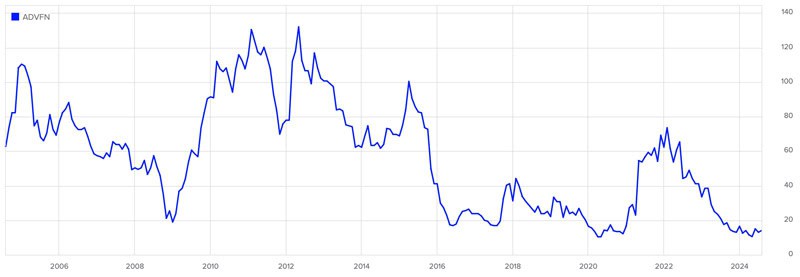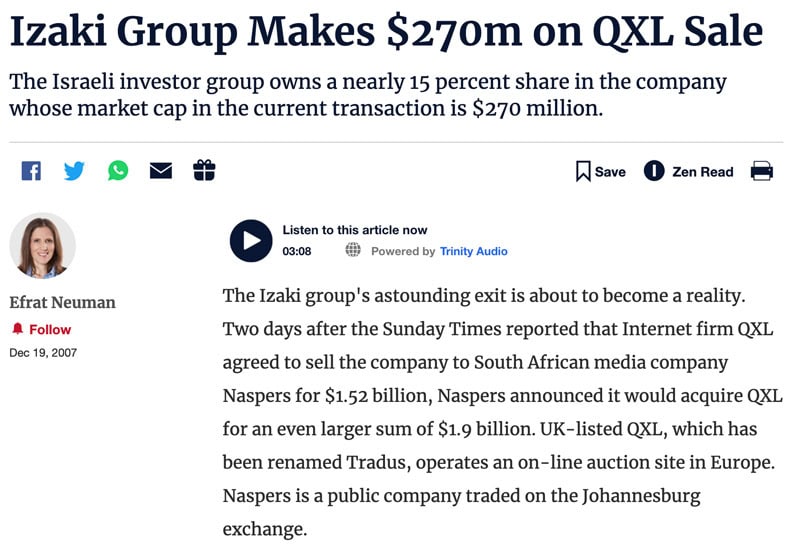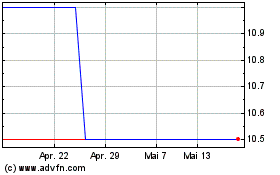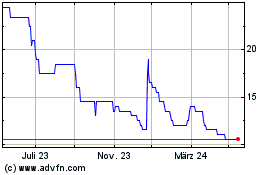
An online financial information company with millions of users
would normally have a market value in the tens, if not hundreds of
millions. Not ADVFN.
Content reproduced with permission from undervalued-shares.com
The company has about 5m users, but its market cap is a paltry
GBP 6.5m.
In fact, its market cap is just a smidgen higher than its net
cash reserves. The users are currently valued at less than a pound
each.
This has attracted a group of Israeli tech entrepreneurs who
come with an extraordinary track record in investing. The same
group once built a large stake in another British Internet firm
that had fallen on hard times, and in just a few years they made
10x their money on USD 25m.
Will the new investors manage to turn ADVFN (LSE:AFN) into an
even more astounding home run?

ADVFN’s history in a nutshell
London-listed ADVFN (ISIN
GB00BPT24C10, UK:AFN) is one of the world’s largest online
financial information providers.
When it started in 1999, it had a simple but important ambition:
to level the playing field for retail investors by providing access
to information that was previously the preserve of institutional
investors and professional traders. ADVFN was first in the UK to
make “Level 2” market data available to retail investors.
The company went public in March 2000, at the very peak of the
dotcom bubble.
Anyone who invested then lost 99% of their investment in the
space of a few years. The information that ADVFN provided was a
boon for private investors, but for its shareholders it produced
nothing but losses – with one exception.
ADVFN’s CEO, Clem Chambers, only owned a small stake in the
company, but he managed to make himself the prime beneficiary. In
between salary, travel expenses, and equity options, Chambers made
a decent living off the company. He even managed to secure himself
a contract with a three-year (!) notice period. This was probably
unique among publicly listed British companies, and an effective
poison pill for anyone who dared challenge his position. It
summarised what a self-service shop ADVFN was for its management
team.
I met Chambers once, over a decade ago. Despite my natural
tendency to look for the good in anyone, he was one of the few
characters whom I instantly disliked – a lot!
I’ve been following ADVFN’s developments ever since.
It’s a tiny company with limited free-float, which is why few
others paid attention. ADVFN last properly made it into the news in
the mid-2010s when a group of Israeli investors tried to wrestle
control of the company.
In 2015, two shell companies, Sweet Sky Limited and Shellhouse
Limited, declared a holding of over 25%. They requisitioned an
extraordinary general meeting of shareholders and suggested to
defenestrate the management.
The Israeli investors backing the attempt had not done their
homework. ADVFN itself was not a regulated firm, but it owned 100%
of ALLIPO, an FCA-regulated business. As such, anyone buying more
than 10% of ADVFN had to get FCA approval before surpassing this
threshold.
Even though the Israeli reportedly had the backing of 40% of the
share capital, Chambers was able to fend off the shareholder
revolt. The brokerage custodians acting for the group decided not
to proceed with the requisition for a general meeting, and instead
advised the Israelis that they had breached multiple FCA
regulations. The putsch was over before it had
even begun.
The market briefly anticipated change, driving the share price
from 60 pence to 100 pence. A year later, it was trading as low as
16 pence. It stayed around this sell-out level until 2020, when the
Israelis re-emerged from the shadows.
Following further re-arranging and building their stakes, the
activists once again stepped forward in early 2022 to demand
changes to the board. This time, they had done their homework. The
incumbent board decided that it was best to negotiate a deal and
move on.
Chambers agreed to step down in exchange for two years’ worth of
salary in cash and stock, and a consulting agreement. The Israelis
underwent compliance procedures and got board representation. The
second putsch attempt succeeded without a single
shot fired.
With new management in charge, it begs the question…
Who are the Israelis?
Little is known publicly about the new investors who are now in
charge of ADVFN. Most of what’s in the public domain relates to
their previous involvement with QXL, a former publicly listed
online auction house and one of the original Internet wonder
stocks.
QXL floated in the early 2000s alongside other famous names such
as lastminute.com and Scoot.com. It was also the inaugural British
member of what was then called the “99% Club”, named to recognise
dotcom companies that had lost 99% of their value since going
public. In the short space of just eight months after the IPO in
April 2020, QXL’s market cap sank from GBP 2bn to almost
nothing.
QXL survived the subsequent funding crisis, and parts of its
business thrived. In 2004, its management tried to take advantage
of the beaten-down stock price and launched a management buy-out,
offering shareholders GBP 7 per share. Florissant, the venture
capital firm backed by Icelandic entrepreneur Björgólfur
Björgólfsson, stepped in with an offer of GBP 14. Björgólfsson’s
attempt failed because a group of Israeli investors built a stake
of 26% and drove the price up to GBP 16.
The Israelis believed there was much more value left in QXL, and
kept buying more shares, even at a price of GBP 30. The following
year, QX’s share price rose to GBP 120.
In late 2007, QXL was taken over by Naspers, Africa’s largest
media group, for GBP 946m. The Israelis had a 10x on their
investment and walked away with a cool USD 270m.

Only limited information is available about who backed the
transaction involving QXL, but some names did make it into the
public domain – such as Ron Izaki or Izhaki (his name was spelled
one way during the heydays of the QXL deal and is now spelled
another way in the filings for ADVFN). The Financial
Times once described him as a “real estate
developer“. Izhaki today holds 6.48% of ADVFN.
Another key figure is Yair Tauman, who may well have instigated
the entire affair. Tauman had first become a non-executive director
of ADVFN in 2010. A professor of economics at The State University
of New York and an expert on game theory, he had made money as
co-founder of Bidorbuy.com, then Africa’s largest online auction
site. Tauman stepped down from his position in 2014 when the
activists first demanded changes, but returned to the board in
2022. He today holds 9.18%, while his son and ADVFN CEO, Amit
Tauman, owns another 11.82%.
Another investor associated with the group is Dan Horsky, who
owns 8.85% of ADVFN.
Clem Chambers’ holding company, Blockchain PLC, is currently
listed on the ADVFN website with a 6.63% stake. However, recent
regulatory disclosures show that Blockchain PLC has already sold
off parts of its stake and now only owns 4.95%.
Given their previous tussle with FCA regulations, the market has
not yet given the Israelis much credit for taking control of ADVFN.
Currently trading at 14 pence, the stock is down massively since it
peaked at 75 pence in early 2022 when headlines about Chambers’
resignation appeared. Remarkably, it’s also down a lot since a
share placement at 33 pence in January 2023. The new investors had
agreed to back a GBP 6.8m share issue at the price, to give ADVFN
the necessary financial manoeuvring room to implement changes.
Given ADVFN’s tiny size and how all parties involved handled
themselves at some point in the past, it’d be easy to ignore all of
these developments. ADVFN is not conventionally investible.
However, there are too many aspects that make it worth a closer
look.
E.g., there is the fact that between 2000 and 2008, Dan Horsky
managed to increase his personal investment portfolio from USD
500,000 to USD 80m (i.e., 160x), primarily on the back of being an
early investor in QXL. (Horsky then took his portfolio to USD 220m
by 2016 but eventually got done for tax evasion, as described
in this
US government filing.)
Clearly, these Israeli investors are no muppets.
Of late, they even have the support of a former executive of
eToro, the UD 3.5bn social investment platform that also came out
of Israel.
ADVFN’s offering in a nutshell: data, chat, advertising
ADVFN still operates an information platform for private
investors.
As the corporate website describes it, “ADVFN Plc provides
comprehensive global stock, crypto, forex and commodity market
information to the private investors in the UK, US, Brazil, Italy
and other international retail markets. It offers a unique
environment for premium data where financial advertisers and
companies engage directly with a huge active audience of
investors.”
ADVFN’s service attracts 34m unique global users per year, with
10m+ monthly visitors generating over one billion page impressions
every year. Based on a mixture of subscription fees and advertising
income, ADVFN’s roughly 35 staff generate about GBP 5.5m in annual
revenue.
ADVFN had long had one of the most atrocious-looking websites of
the finance world, and its revenue is barely enough to keep the
lights on. Then again, the Israeli investors seem to have spotted
an opportunity that excites them. After all, they have now been
involved with the company for ten years already. You don’t stick to
a labour-intense investment for that long unless you believe that
you are onto something big.
5m registered users on a platform that offers financial
information is a tremendous asset, and it begs to be exploited in a
more efficient way.
As a mere example, if ADVFN’s new management got 1% of the
registered users to sign up to a monthly subscription product that
costs GBP 10 per month, that alone would double the company’s
annual revenue. Given the digital nature of the business, much of
such additional revenue would go to the bottom line.
The scalability of this type of business is tremendous.
Just as much, the new investors seem to have punchy ambitions.
In the 2023 annual report, the firm’s new CEO closed by saying:
“In 2024 we plan to introduce a new product which we believe
is going to revolutionise the way our users consume financial
information, utilise our existing community and tools in different
ways.”
To get there, Tauman first had to carry out extensive
restructuring. Overcoming the legacy left behind by the reign of
Clem Chambers involved:
- Reshaping the board structure and related activities, which
incurred legal expenses of GBP 200,000.
- Addressing outdated infrastructure and the risks associated
with old hardware.
- Resolving “complexities” with the joint venture in Brazil.
- Winding down non-core operations.
To get the business to move forward, ADVFN also:
- Invested in high-capacity, low-latency data processing to
improve site stability.
- Expanded its product offering through the launch of real-time
option data and option flow product, new and unique editorial
content, comprehensive global fundamental data for relevant
markets, and the revamp of the InvestorsHub message board.
- Optimised the ad tech operations.
- Streamlined the funnels for user engagement and
monetisation.
- Integrated advanced analytics into the operations.
- Reduced operational costs by 20% while onboarding new senior
team members.
What about this “new product that will revolutionise the way
the users consume financial information“?
ADVFN had promised to have its new app ready by the end of
Q2/2024. In its most recent corporate update published in early
July 2024, it had to admit that the plan has now shifted to the end
of Q3/2024.
Without a doubt, though, the company has made tremendous
progress already, as outlined in its recent update:
“Revamping the ADVFN offering, including the redesign and
mobile optimisation of the website, is phased as follows:
- Phase 1 completed: The first phase of the Platform updates,
which includes most of the core tools and pages ADVFN offers and
ADVFN AI Intelligence, is now live on advfn.com;
- Phase 2 initiated: We have commenced the rollout of these
enhancements to additional countries, with completion anticipated
in the Autumn; and
- Long Tail Redesign: Upon the conclusion of Phase 2, we will
proceed with a comprehensive update of the remaining sections of
the platform.
- We have also successfully integrated advanced analytics
into our operations, significantly enhancing our data-driven
decision-making capabilities.
- Optimisation and monetisation efforts are underway, with
the primary objective of increasing our subscription
base.“
Of late, this progress has started to attract a different kind
of talent, such as Shalom Berkovitz, former Chief Financial Officer
and Deputy Chief Executive of eToro, who was appointed ADVFN’s
non-executive director in June 2024.
The writing on the wall is clear: the Israeli investors now in
charge of ADVFN have the experience, the network, and the resources
to create something big. After ten years of efforts, they’ll want
to see their investment become a home run similar to QXL.
What’s an investor to do?
ADVFN is a most peculiar opportunity.
With a market cap of currently GBP 6.5m, it is barely trading on
par with its cash reserves of GBP 4.8m.
Its 5m registered users are almost given away for free, as is
the rest of its web traffic.
Then again, ADVFN has been bleeding money of late. In the six
months that ended 31 December 2023, it lost GBP 0.5m. Cleaning up
legacy issues, investing in new systems, and cutting off some
existing product categories cost the company dearly. In 2023,
revenue sank by 30%, from GBP 7.8m to GBP 5.5m.
Does the new team have what it takes to turn ADVFN into a new
company altogether?
Based on results so far and with the recent impressive addition
to the board, ADVFN may now turn the corner.
Could this be a 100-bagger one day?
Given the global footprint of its business, the scalability of
the business model and the players involved, ADVFN could have the
potential for something remarkable. After all, ADVFN is able to
speak to FIVE MILLION investors – and that’s just the ones who have
registered. Just think how much it would cost to recreate such a
user base from scratch. The replacement value of the existing
system sure is a lot higher than the current market cap.
It’s too early to produce any estimates, but the current share
price seems remarkably low. After all, in January 2023, the new
investors were entirely content to add millions to their investment
by subscribing to more stock at a price of then 33 pence. Right
now, the share price is trading at not even half that.
Normally, such a micro-cap would barely deserve featuring, given
the limited trading activity. However, of late, larger amounts of
stock have become available, as Clem Chambers has been reducing his
stake that he held indirectly as CEO of Blockchain PLC. In June
2024, Blockchain PLC reportedly reduced its stake from 6.63% to
5.91%, followed by a further reduction to 4.95% in July 2024.
Blockchain PLC’s public filings reveal a challenging financial
situation. According to the annual report as of June 2023,
“there is material uncertainty that may cast doubt over the
Group’s ability to continue as a going concern“, and “the
Group’s and Company’s ability to continue as going concern
is dependent on the cashflows from sale of shares in
AVDFN Plc and ability of the Group to raise
additional funds.”
The remaining stake in ADVFN held by Blockchain PLC translates
to about 2.3m shares (out of 46m) or about GBP 300,000 worth of
shares. Whether Blockchain PLC remains in the market as a seller
right now cannot be known for sure. Now may be an opportunity to
build a small position, though.
If the Israelis are only half as successful as I think they plan
to be, even holding a GBP 5,000 stake could one day add up to
serious money. If anything, the stock should be trading at least at
the 33 pence level at which the share issue took place – or higher,
given the progress made since then.
It’s a strange story, and the loss-making company with its
quirky band of renegade investors is not without risk. It’d be
difficult to refute, though, that a global investor platform with
5m registered users couldn’t be turned into something much more
valuable.
Advfn (LSE:AFN)
Historical Stock Chart
Von Aug 2024 bis Sep 2024

Advfn (LSE:AFN)
Historical Stock Chart
Von Sep 2023 bis Sep 2024
